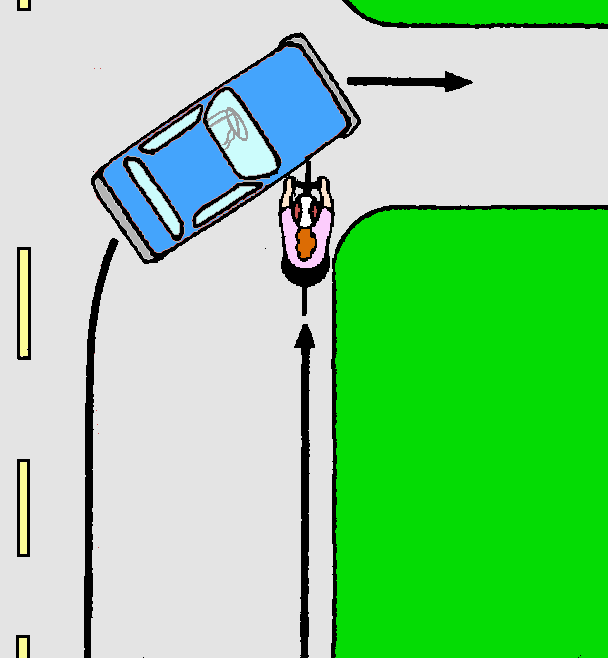Riding through Intersections
When riding a bicycle, be especially mindful of other road users at intersections. Movements at intersections are complex and less predictable relative to other road sections. In Central Arkansas, 63% of car vs. bicycle crashes occur at intersections (“Crash Conditions”, pg. 15). Here are some ways to increase your safety at intersections:
- Be Visible and Predictable
- Take the (Appropriate) Lane
- Make Eye Contact
Be Visible and Predictable
Being visible and predictable can be tremendously helpful to avoid car vs. bicyclist crashes. Wear bright clothing, use lights (even during the day), and be aware of and attempt to avoid driver blind spots. Being predictable in intersections means occupying the same part of the road as a vehicle (see “Take the Lane” below), following the same movements as would be expected of a vehicle in that space in the road, and signaling your intentions.
Take the (Appropriate) Lane
When on a bicycle, “taking the lane” means scanning to make sure that it is safe to move into the center of the lane and then doing so. Before approaching an intersection, you may be riding to the right of the lane to help cars get around you. While this may be a safer place to be before an intersection, it is especially important to be a part of the predictable flow of traffic at an intersection. When you are the full occupant of a lane, drivers will better account for you. This is especially important to avoid a “right hook” (Fig. 1).

Figure 1. A "right hook" occurs when a vehicle turns right immediately in front of a bicycle traveling straight, causing the bicycle to crash into the car. One way this type of crash can occur is at an intersection, when the person on the bike does not move into the center of the right-most lane allowing straight movement. In this case, the driver does not account for the bicyclist resulting in a crash. Image from http://john-s-allen.com.
Which lane? If you are turning right, you should be in the center of the right-most right turn lane. If you are going straight, you should be in the center of the right-most lane that allows traffic to move straight. If you are turning left, you should be in the center of the right-most lane that allows a left turn. See the video below for more information.
Video provided by the League of American Bicyclists.
Make Eye Contact
Making eye contact with a driver lets you and the driver know that you see each other and are accounting for each other on the road. If you are not able to make eye contact with a driver, assume the driver does not see you and act accordingly!




 Trash & Recycling
Trash & Recycling
 Online Payments
Online Payments
 City Documents
City Documents
 Parks
Parks
 Traffic Court
Traffic Court
 E-NEWS
E-NEWS
 EXPLORE
EXPLORE
 NEWS
NEWS
 TRANSLATE
TRANSLATE
